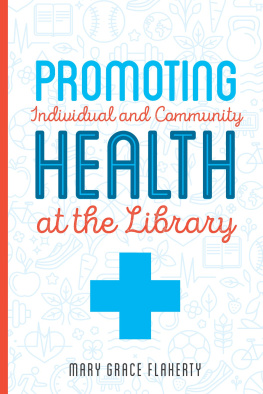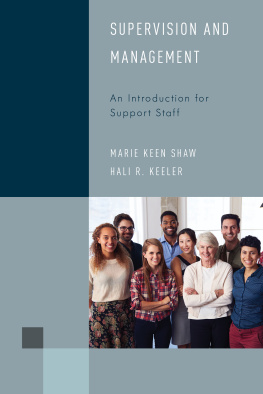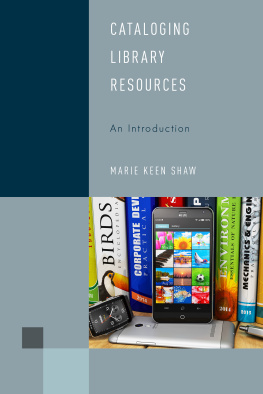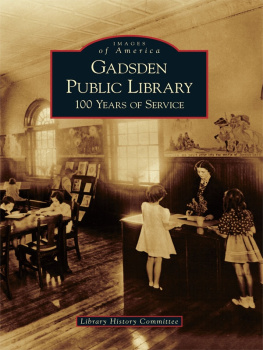The Library Staff Development Handbook
Medical Library Association Books
The Medical Library Association (MLA) features books that showcase the expertise of health sciences librarians for other librarians and professionals.
MLA Books are excellent resources for librarians in hospitals, medical research practice, and other settings. These volumes will provide health care professionals and patients with accurate information that can improve outcomes and save lives.
Each book in the series has been overseen editorially since conception by the Medical Library Association Books Panel, composed of MLA members with expertise spanning the breadth of health sciences librarianship.
Medical Library Association Books Panel
Kristen L. Young, AHIP, chair
Dorothy Ogdon, AHIP, chair designate
Michel C. Atlas
Carolann Lee Curry
Kelsey Leonard, AHIP
Karen McElfresh, AHIP
JoLinda L. Thompson, AHIP
Heidi Heilemann, AHIP, board liaison
About the Medical Library Association
Founded in 1898, MLA is a 501(c)(3) nonprofit, educational organization of 3,500 individual and institutional members in the health sciences information field that provides lifelong educational opportunities, supports a knowledge base of health information research, and works with a global network of partners to promote the importance of quality information for improved health to the health care community and the public.
Books in the Series:
The Medical Library Association Guide to Providing Consumer and Patient Health Information edited by Michele Spatz
Health Sciences Librarianship edited by M. Sandra Wood
Curriculum-Based Library Instruction: From Cultivating Faculty Relationships to Assessment edited by Amy Blevins and Megan Inman
Mobile Technologies for Every Library by Ann Whitney Gleason
Marketing for Special and Academic Libraries: A Planning and Best Practices 6. Sourcebook by Patricia Higginbottom and Valerie Gordon
Translating Expertise: The Librarians Role in Translational Research edited by Marisa L. Conte
Expert Searching in the Google Age by Terry Ann Jankowski
Digital Rights Management: The Librarians Guide Edited by Catherine A. Lemmer and Carla P. Wale
The Medical Library Association Guide to Data Management for Librarians Edited by Lisa Federer
Developing Librarian Competencies for the Digital Age Edited by Jeffrey Coghill and Roger Russell
New Methods of Teaching and Learning in Libraries by Ann Whitney Gleason
Becoming a Powerhouse Librarian: How to Get Things Done Right the First Time by Jamie Gray
Assembling the Pieces of a Systematic Review: A Guide for Librarians Edited by Margaret J. Foster and Sarah T. Jewell
Information and Innovation: A Natural Combination for Health Sciences Libraries Edited by Jean P. Shipman and Barbara A. Ulmer
The Library Staff Development Handbook: How to Maximize Your Librarys Most Important Resource by Mary Grace Flaherty
The Library Staff Development Handbook
How to Maximize Your Librarys Most Important Resource
Mary Grace Flaherty
Rowman & Littlefield
Lanham Boulder New York London
Published by Rowman & Littlefield
A wholly owned subsidiary of The Rowman & Littlefield Publishing Group, Inc.
4501 Forbes Boulevard, Suite 200, Lanham, Maryland 20706
www.rowman.com
Unit A, Whitacre Mews, 26-34 Stannary Street, London SE11 4AB
Copyright 2017 by Medical Library Association
All rights reserved. No part of this book may be reproduced in any form or by any electronic or mechanical means, including information storage and retrieval systems, without written permission from the publisher, except by a reviewer who may quote passages in a review.
British Library Cataloguing in Publication Information Available
Library of Congress Cataloging-in-Publication Data Available
ISBN 978-1-4422-7035-0 (hardback : alk. paper) | ISBN 978-1-4422-7036-7 (pbk. : alk. paper) | ISBN 978-1-4422-7037-4 (electronic)
 The paper used in this publication meets the minimum requirements of American National Standard for Information SciencesPermanence of Paper for Printed Library Materials, ANSI/NISO Z39.48-1992.
The paper used in this publication meets the minimum requirements of American National Standard for Information SciencesPermanence of Paper for Printed Library Materials, ANSI/NISO Z39.48-1992.
Printed in the United States of America
Contents
Preface
An exceptional library of any type requires exceptional staff, individuals who are enthusiastic, engaged, and willing to go the extra mile. Identifying, recruiting, and developing exceptional staff are not automatic processes, however, and practitioners often list staff development as a skill they have had to acquire on the job. The Library Staff Development Handbook: How to Maximize Your Librarys Most Important Resource serves as a guide for aspiring librarians and library managers and any individuals who are responsible for hiring and supervising staff in all types of library settings. It provides a template for systematic operationalization of critical staff-related tasks and activities to optimize library function across institutional settings.
Each chapter in this volume is dedicated to a different aspect of staff interaction and development with practical examples, samples, tips, and anecdotes from a variety of library practitioners and settings. We begin with chapter 1, an introduction to the topic of library staff development. Chapter 2 covers staffing within the context of the greater organization, including strategic planning for developing the workforce and responding to the user community. Job descriptions, succession planning, and cross-training are also covered in chapter 2. Recruitment is discussed in chapter 3, with attention to the interview process, how to design a rubric for evaluating candidates, and how to ensure your job offer is irresistible. Chapter 4 continues with staff engagement and retention, including how to keep staff motivated by recognizing extrinsic and intrinsic factors, and how to challenge staff in a way that they are not overwhelmed. The more demanding side of supervision is also addressed, with a discussion of progressive discipline that includes examples of how to navigate the process.
Chapter 5 focuses on staff development specifically with regard to training and continuing education, activities for mentoring, and maintaining high morale. The next chapter is dedicated to staff evaluation. The process for instituting a regular schedule of performance appraisals is introduced, along with suggestions for involving staff in the process and how to use goals and objectives as an effective means for assessment. Chapter 7 looks at alternative funding sources for supporting staff, including grants, scholarships, and awards. The final chapter concludes with a summation on staff development and future considerations.
Library staff are indeed the most important resource in every type of library, and tending to staff development is a vital component of an effective managers repertoire of skills. This volume can serve as a refresher for seasoned directors, as a handbook for new supervisors, as a reference for individuals with supervisory responsibilities, and as a companion text for library management instructors.
Authors note: Throughout this book I have used the pronoun they and corresponding their and them to connote s/he and her/his and her/him . This was not an oversight, but rather a deliberate choice, made in an attempt to be inclusive to readers who self-identify in a variety of manners.
Acknowledgments
I would like to express my sincere gratitude to the following people whose support has made writing this book an enjoyable experience: Charles Harmon, Sami Kaplan, and Les Roberts. Sincere thanks also to contributors Yael Chartier, Lori Haight, Samantha Kaplan, S. Rebecca Lubin, Annie Norman, Curtis Powell, Joan Petit, Alena Principato, David Seleb, and Rebecca Vargha for their valuable input.
Next page










 The paper used in this publication meets the minimum requirements of American National Standard for Information SciencesPermanence of Paper for Printed Library Materials, ANSI/NISO Z39.48-1992.
The paper used in this publication meets the minimum requirements of American National Standard for Information SciencesPermanence of Paper for Printed Library Materials, ANSI/NISO Z39.48-1992.